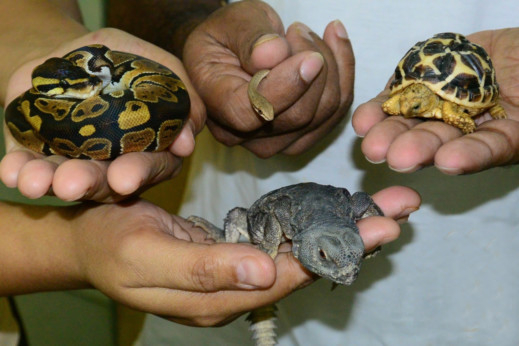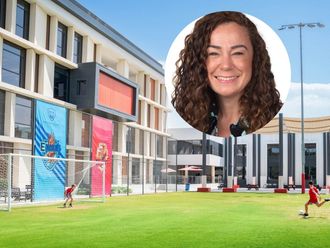
Al Ain: Al Ain Zoo has welcomed newborn reptiles, among them threatened species, and will soon welcome visitors to the zoo’s reptile house to have a look at them.
The new additions to the reptile family include the Afro-Asian sand snake, Royal Python, dhab (spiny-tailed agama) and Indian Star Tortoise, which are being closely monitored by the zoo’s veterinarian team.
The Afro-Asian sand snake family welcomed three newborns following a 90-day incubation period. The eggs were laid by the mother in the exhibit, and were then moved to a special temperature- and humidity-controlled incubator.
Active during the day, the snake is widespread throughout the Arabian Peninsula and Western Asia. Upon hatching, they measure around 35cm and can grow up to 1.2 metres. Their venom is lethal to their prey but harmless to humans and domestic pets.
Five Royal Python newborns, also known as Ball Python, hatched at Al Ain Zoo following a 95-day gestation period. In the wild, mothers usually lay their eggs in a deep hole or a hollow log, and remain protectively curled around them throughout the incubation period. The staff of the reptile section at the zoo opted to remove the eggs in order to closely monitor and control their temperature.
The smallest of the African pythons resides in the tropical savannahs and grasslands in West Africa.
Two new-born spiny-tailed Agama lizards, locally known as the dhab, recently joined the reptile exhibit at Al Ain Zoo. Not much is known about the hatching process as the eggs are laid in deep natural holes within the large enclosure that the animal keepers can’t access.
They are currently found in the UAE and Oman, and inhabit gravel plains and live in large colonies.
Following a 110-day gestation period, several Indian Star Tortoises were born at Al Ain Zoo. Typically, two or three eggs are laid during the summer period in a deep hole that is dug by the mother.
They are listed as a threatened species due to the exotic pet trade and habitat destruction. The tortoises are generally found in the grasslands and dry forest areas of India and Sri Lanka, and also feed on plants, flowers and fruit.
Al Ain Zoo is home to internationally important conservation programmes that focus on the wildlife of the world’s arid regions, and is active in conservation research, captive breeding and propagation.
The zoo is also involved in sustaining the genetic diversity of endangered species and reintroducing them to their natural habitat whenever possible.












